Table of contents
Ground cloves or cloves ( Syzygium aromaticum ) develop their unique aroma more quickly than whole cloves . Dried and uncrushed, they resemble small nails, hence the name Nägeli .
Use in the kitchen:
Ground cloves are used in Christmas biscuits and to flavor desserts such as apple sauce, jam and compote. In this combination they harmonize with cinnamon, nutmeg, star anise and lemon. The fine powder is also a component of spice mixtures such as curry powder , garam masala , quatre-épices, Chinese five-spice or the African, spicy mixture Berbere. Cloves also give stocks, soups, sauces and marinades a special flavor in small doses.
What is clove powder? Is allspice clove powder? Clove powder is dried, ground clove buds. Allspice ( Pimenta dioica ) also belongs to the myrtle family and tastes similar to cloves. Because of its peppery spiciness, allspice is also called clove pepper. It also has a cinnamon and nutmeg aroma.
Whole cloves often only serve as a flavor carrier and are removed after boiling. Spicy rice dishes, pastries, curries, red cabbage (blue cabbage) and pickled vegetables (cucumbers or sauerkraut ) in particular get a special flavor from whole clove heads. Whole cloves are added to hot drinks such as mulled wine or punch in the run-up to Christmas. Certain liqueurs or fruit juices only get their unique flavor when they contain cloves.
Only the clove head tastes sweet, aromatic to spicy, burning, while the stem is penetratingly bitter. Cloves can also be eaten raw.
Clove powder is easy to make from whole cloves: grind the cloves fresh in a spice grinder.
Recipe for vegan spice pancakes:
Ingredients: 100 g coconut flour (alternative to white flour), 125 g wholemeal flour , 2 tsp cream of tartar baking powder , 1/2 tsp baking soda , 1/4 tsp ground cinnamon , 1/8 tsp ground nutmeg , 1 pinch ground cloves, 1 tsp grated orange peel ; 350 ml orange juice , 50 g raisins , oil (e.g. rapeseed oil ), maple syrup .
Preparation: Mix dry ingredients such as flour, baking powder, baking soda and spices. Add orange peel, raisins and orange juice and mix everything very quickly to form a dough. Heat oil and use the dough to make 10 small pancakes. Serve with maple syrup and fresh fruit.
How can you make clove oil yourself?
Recipe for making clove oil:
Ingredients: 50 ml cold-pressed, high-quality almond oil, 3 teaspoons ground cloves (or 10-15 whole cloves, freshly ground), 1 screw-top jar, 1 filter.
Preparation: Put all the ingredients in a screw-top jar and leave it tightly closed in a dark, cool place for about 14 days. As with a tincture, you should shake the oil well once a day. Then filter the oil and pour it into a dark brown glass bottle, preferably with a pipette.
Clove oil should always be taken diluted (with cooking oil or water). If necessary, it can be applied to the desired areas of skin using a cotton swab or used as a bath additive or in a foot bath. The numbing clove oil is often applied to painful areas of the body, but care should be taken when it comes into contact with mucous membranes due to the irritation. Clove oil can also be used in an aroma lamp as a room fragrance, and it also serves as an insect repellent.
| Not only vegans or vegetarians should read this: Vegans often eat unhealthily. Avoidable nutritional mistakes . |
Shopping - where to buy?
Clove powder is available in almost all supermarket chains such as Coop , Migros , Denner , Volg , Spar , Aldi , Lidl , Rewe , Edeka , Hofer etc., especially in the run-up to Christmas. The quality is difficult or even impossible to control and you don't know how long the spice jar has been on the shelf.
Whole cloves, on the other hand, are available all year round. Poor quality can be recognized by wrinkled, dusty cloves; they are often broken or without heads. The "floating test" also provides information: Poor quality floats horizontally in the water: The cloves have hardly any essential oil. Good quality can be recognized by their plump appearance. The cloves sink to the bottom in the water or float upright with the heads upwards. 1
The best quality comes from the Moluccas, Zanzibar and Madagascar. Unfortunately, the packaging rarely states the origin.
Found in the wild:
Clove trees still grow wild on Indonesian islands such as the Moluccas, New Guinea, Ternate and Tidor. 2
Storage:
Ground cloves lose their aroma very quickly. It is therefore important to store the powder in a well-sealed, dry and dark place. It is best to buy good quality whole cloves and grind them in a spice mill or crush them with a mortar when necessary. Whole cloves retain their aroma for a very long time. If stored in a dry place, protected from light and heat, the aromatic buds will last for 2-5 years.
Ingredients - nutritional value - calories:
Dried cloves, whole or ground, have an energy content of 274 kcal/100g. They have a very high carbohydrate content of 78%, a significant fat content (15%) and only a small amount of protein (7%). When dried, the water content is less than 10%. 3
The content of essential oil varies depending on the origin and quality and fluctuates between 15 and 22%. The main component here is eugenol (85%), 15% eugenol acetate and 5-12% β-caryophyllene. Tannins are also included at 8-14%. Cloves also contain flavonoids, sterols and around 10% fatty oil. 4
A study from Spain found that the content of antioxidants (polyphenols) in the essential oil of cloves is the highest compared to oregano, rosemary, thyme and sage. 5
Cloves contain a high proportion of valuable ingredients. Unfortunately, we don't consume much of the spices we eat. The daily use of spices and herbs helps to ensure that our nutritional needs are met in a variety of ways - with a good ratio of omega-6 to omega-3 fatty acids.
Cloves contain 141 µg/100g of vitamin K. This fat-soluble vitamin is important for blood clotting and bone metabolism. A lot of it is found in green vegetables ( chard 830 µg/100g) and herbs ( fresh parsley 1640 µg/100g). Vitamin E is also found in the flower buds of cloves (8.8 mg/100g). It is one of the fat-soluble vitamins and has an important antioxidant function. Nuts and seeds such as almonds (25.6 mg) and sunflower seeds (35 mg) contain large amounts of the vitamin. Vegetables such as cabbage (2.3 mg) and fruit such as mango (0.9 mg) have a low vitamin E content. 3
The macro mineral calcium is important for bones and teeth. Cloves have a high proportion of it at 632 mg/100g. Aniseed (646 mg) or star anise (650 mg) have a similar amount of calcium. Fenugreek leaves have particularly high levels: 3,275 mg. 3
In addition, cloves contain a similar amount of magnesium (259 mg/100g) as black cumin (260 mg). The mineral is important for enzymatic metabolic reactions and is known to help with cramps. Unpeeled hemp seeds contain a lot of magnesium (700 mg/100g). 3
Potassium , an essential macronutrient, regulates the water balance in the cells, among other things. Cloves have 1,020 mg/100g, similar to pistachios (1,025 mg). Herbs, pulses and nuts contain a lot of potassium: dried parsley 2,680 mg, white beans 1,795 mg. 3
The proportion of the trace element manganese is extraordinarily high at 60 mg/100g. That is about twice as much as in ground ginger, saffron or cardamom . 3 An adult needs 1-1.5 mg of manganese daily, 6 to keep the cartilage tissue in the body healthy, among other things.
Iron , also a trace element, is contained in cloves at 12 mg/100g. It is hard to believe, but spices and herbs have a very high iron content and contribute to good oxygen transport in the blood and a healthy energy metabolism. The iron content in fresh marjoram (13 mg) and cocoa beans (14 mg) is similar to that of cloves. Ground turmeric has very high values at 55 mg and wild mallow at 78 mg. 3
Health aspects - effects:
A tincture is usually used to disinfect the mouth and throat and as a stomach stimulant. You can read how to make this yourself above the box link. The crategolic acid contained in the clove is partly responsible for the analgesic (pain-relieving) effect. 7
In medicine, clove essential oil is found in lemon balm spirit, a stomach-strengthening agent, or in other appetite-stimulating tonics. 4
How does clove oil work? The eugenol it contains has an antimicrobial effect and inhibits the growth of fungi, bacteria and viruses. A study from Portugal showed a promising effect against Candida and Aspergillus fungi. 8 Clove oil is said to be particularly effective in treating vaginal yeast infections. 9 Certain acne-causing bacteria can also be treated naturally with clove oil. 10 The ingredient eugeniin is also said to have an antiviral effect against herpes. 11
More about Eugeniin
The study shows that the hot water extract of Geum japonicum has prophylactic and therapeutic effects against herpes simplex virus (HSV) in mouse infection models, with a concentration of 5 µg/ml showing 50% plaque reduction. Eugeniin also inhibited the growth of acyclovir-phosphonoacetic acid-resistant HSV-1, thymidine kinase-deficient HSV-1 and wild HSV type 2. Both eugeniin and phosphonoacetic acid inhibited viral DNA and late viral protein synthesis in their infected Vero cells, but not cellular protein synthesis at their inhibitory concentrations.
Ingredients in cloves are said to help with diabetes by controlling certain genes in liver cells so that sugar metabolism is better regulated in a natural way. 12
In animal experiments, ground clove buds were mixed into the feed, which improved the animals' antioxidant status. 20 The Total Antioxidative Status (TAS) describes the capacity of the plasma to compensate for reactive oxygen compounds (peroxides and oxygen radicals). It is, so to speak, a recording of the antioxidant protection system. 21
Clove capsules containing ground clove buds are also available on the market. They are said to be effective against toothache, bad breath, digestive problems, intestinal parasites, etc. There appear to be no side effects. However, studies on their exact effectiveness and the tolerable dosage are still lacking.
Dangers - Intolerances - Side effects:
Cloves can cause severe irritation to the mucous membranes if overdosed. This danger exists with all spices with a high proportion of essential oil, but the intense smell usually prevents this. 4 Too much clove oil can damage tissue and trigger allergic reactions.
Cloves are considered to induce labor, which is why pregnant women should avoid too much cloves or clove oil. If you want to induce labor, teas containing cloves are recommended to induce labor.
Folk medicine - natural healing:
Due to their antiseptic, slightly anaesthetic effect, cloves are known as an externally applied toothache reliever. 13 Clove oil is particularly helpful in homemade toothpaste.
Can you chew cloves? Chewing whole cloves for toothache or bad breath is a well-known home remedy.
Cloves are used internally for gastrointestinal inflammations and intestinal parasites. In China, they are used as a remedy for nausea, hiccups, so-called stomach cold and impotence. 14
The disinfectant effect of cloves was particularly promising in the Middle Ages during epidemics of plague and cholera. 4
Occurrence - Origin:
Where do cloves come from? The Indonesian Moluccas are the origin of the clove tree ( Syzygium aromaticum ). From there, its buds were transported by traders to India and then to the Mediterranean. 15 Later, the largest quantities were produced on the African islands of Pemba and Zanzibar until the beginning of the 20th century. Today, the majority (80%) comes from Indonesia. For a long time, the Dutch had a monopoly on cloves, and even today, a large proportion of the cloves from the Moluccas are shipped there.
Cultivation - Harvest:
The evergreen clove tree can reach a height of up to 10 m, sometimes even 20 m. Even in the tropical maritime climate, the optimal location for clove trees, the plants only bear fruit in the 6th year. It is typical and special for myrtle plants that the whole tree, in all its parts, contains the aromatic smelling essential oil. The leaves grow elliptically, 5-15 cm long and have a leathery-looking surface. At the end of the branch, on the three-part umbel panicles, you can see 5-20 yellowish-white flower buds. 4
Harvesting cloves is a laborious process and must be done at the right time. When the clove buds turn from green to pink, before the flowers open, the buds must be carefully picked by hand. In some places they are gently knocked off the trees with bamboo sticks, but most are picked from platforms. The flower buds are harvested up to twice a year. Good, fresh cloves feel greasy and lose some oil when you press the stem with your fingernail. 16
After harvesting, the nails are dried on grass mats in the sun until they turn a brownish red color. During the drying process they lose a lot of water, the weight loss can be up to 3/4 of their fresh weight.
Normally, the clove tree is hardly susceptible to pests. However, fungal pathogens such as Valsa eugeniae or Cryptosporella eugeniae can cause great losses. They penetrate the plant's vessels through the roots and cause the young tree to die. In 1950, Valsa eugeniae destroyed half of the plantations in Zanzibar. 17
Danger of confusion:
Less out of danger of confusion, but more as a substitute, one could mention the avens ( Geum urbanum ), a medicinal herb from the rose family (Rosaceae). The rootstock of the true avens smells faintly of cloves, which made it popular in the kitchen as a clove substitute. The effect is also slightly pain-relieving and strengthening. Avens is used for toothache and gastrointestinal disorders. 4
General information:
The clove tree ( Syzygium aromaticum ) belongs to the myrtle family (Myrtaceae). There are some outdated Latin synonyms: Eugenia caryophyllata Thunb., Eugenia caryophyllus (Spreng.), Eugenia aromatica (L.) Baill. or Caryophyllus aromaticus L. 18
In the Middle Ages, the carnation was considered a symbol of the Passion of Christ because the bud was interpreted as a nail. The word "carnation" comes from the Middle German "negelken", meaning little nail. 19
Cloves contain bioactive substances that are used as ant repellent. Cloves stuck in oranges or lemons make a popular and pleasantly scented decoration for the Christmas season.
Alternative names:
According to Wikipedia , the following common names are known: Kramernageln, Kramernegelen, Kreidenelken, Kreidnelken, Muskatnogel (Middle High German), Muskatnogelken (Middle High German), Nägel (Middle High German), Nägelin (Middle High German), Nagelkin (Middle High German), Nagelbaum (Middle High German), Nagelbom (Middle Low German), Nagelein, Nagelin, Nagellin, Nalen (Middle Low German), Necheleche (Old High German), Negelken, Neghelken, Neilikin (Middle High German), Nelchen (Middle High German), Nelchin, Nelgin (Middle High German), Nelekin (Middle High German), Nelikin (Middle High German), Neylicken (Middle High German) and Würznelken. Other names are: grot Necel, grote Negelken, Neghelken, groß Nelken, Mutternägelen and Mutternelken.
The English name for ground cloves is ground clove and the English name for the tree is clove tree.
Further use:
Essential oil is obtained from the flower buds, the young leaves and the tree bark by distillation, which is used primarily in pharmaceuticals. 13 The drug name for cloves is: Caryophylli flos and for clove oil: Caryophylli aetheroleum. 4
Clove cigarettes (kretek) are very popular in Indonesia. This is why the highest consumption of cloves is recorded there. This mixture of tobacco, crushed cloves and other ingredients is known in German-speaking countries under the brand name Gudang Garam.
Cloves are also a popular ingredient in incense used in rituals. 7
Literature - Sources:
Bibliography - 21 Sources
| 1. | Avogel.ch Gewürznelken. |
| 2. | Lippold GHC, Funke CPH. Neues Natur- und Kunstlexikon, enthaltend die wichtigsten und gemeinnützigsten Gegenstände aus der Naturgeschichte, Naturlehre, Chemie und Technologie. Hirschfeld: Wien. 1801. |
| 3. | USDA United States Department of Agriculture. |
| 4. | Pahlow M. Das grosse Buch der Heilpflanzen. Gesund durch die Heilkräfte der Natur. Nikol: Hamburg. 2013. |
| 5. | Viuda-Martos M, Ruiz Navajas Y, Sánches Zapata E et al. Antioxidant activity of essential oils of five spice plants widely used in Mediterranean diet. Wiley Online Library. 2009. |
| 6. | DGE Deutsche Gesellschaft für Ernährung. |
| 7. | Rätsch C. Enzyklopädie der psychoaktiven Pflanzen. Botanik, Ethnopharmakologie und Anwendungen. AT-Verlag: Aarau. 2018. |
| 8. | Pinto E, Vale-Silva L, Cavaleiro C et al. Antifungal activity of the clove essential oil from Syzygium aromaticum on Candida, Aspergillus and dermatophyte species. J Med Microbiol. 2009;58(11). |
| 9. | Ahmad N, Alam MK, Shehbaz A et al. Antimicrobial activity of clove oil and its potential in the treatment of vaginal candidiasis. J Drug Target. 2005;13(10). |
| 10. | Fu Y, Chen L, Zu Y et al. The antibacterical activity of clove essential oil against Propionibacterium acnes and its mechanism of action. Arch Dermatol. 2009;145(1). |
| 11. | Kurokawa M, Hozumi T, Basnet P et al. Purification and characterization of eugeniin as an anti-herpesvirus compound from Geum japonicum and Syzygium aromaticum. J Pharmacol Exp Ther. 1998;284(2). |
| 12. | Prasad RC, Herzog B, Boone B et al. An extract of Syzygium aromaticum represses genes encoding hepatic gluconeogenic enzymes. J Ethnopharmacol. 2005;96(1-2) |
| 13. | Delaveau P, Lorrain M, Mortier F et al. Geheimnisse und Heilkräfte der Pflanzen. Das Beste: Zürich. 1978. |
| 14. | Bown D. Encyclopedia of Herbs & their uses. DK: London. 1996. |
| 15. | Günther U. Zur Geschichte der Gewürznelke bis zum Ende des Mittelalters (Eugenia caryophyllata Thunb. oder Caryophyllus aromaticus L.). Medizinische Dissertation Leipzig. 1937. |
| 16. | Pflanzen-Lexikon.com Syzygium aromaticum. |
| 17. | Brücher H. Tropische Nutzpflanzen. Ursprung, Evolution und Domestikation. Springer: Berlin, Heidelberg, New York. 1977. |
| 18. | Wikipedia Englisch Clove. |
| 19. | Bachmann A, Schoch R, Bruppacher H et al. Schweizerisches Idiotikon. Wörterbuch der schweizerdeutschen Sprache. Band IV. Artikel Nägeli. Huber: Frauenfeld. 1901. |
| 20. | Petrovic V, Marcinak S, Popelka P et al. The effect of supplementation of clove and agrimony or clove and lemon balm on "growing" performance, antioxidant status and selected indices of lipid profile of broiler chickens. J Anim Physiol Anim Nutr. 2012;96(6). |
| 21. | Labor München Zentrum MVZ. Totaler-Antioxidativer-Status (TAS). 2010. |

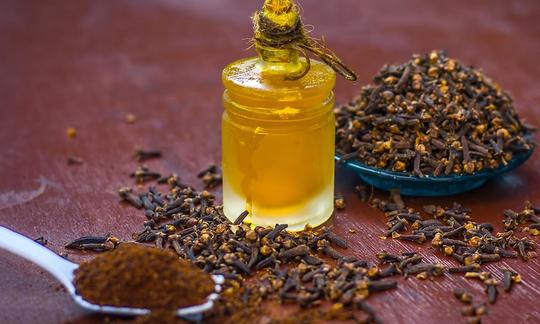

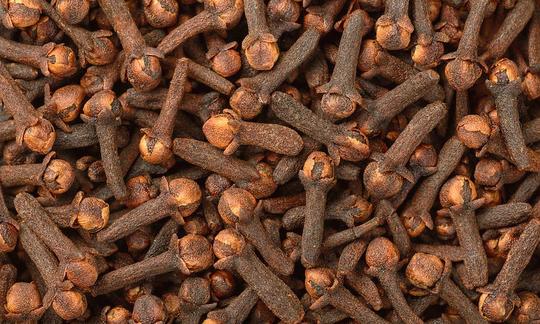

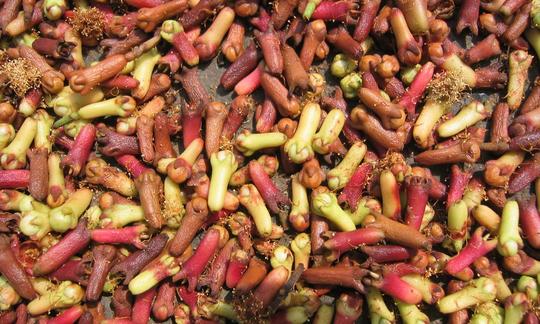

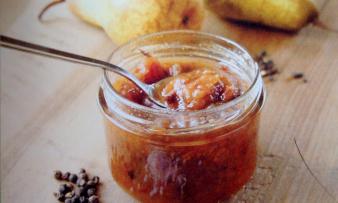

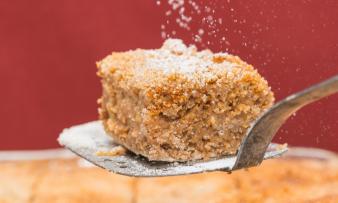





Comments